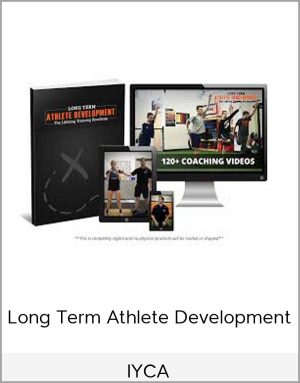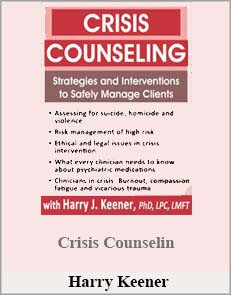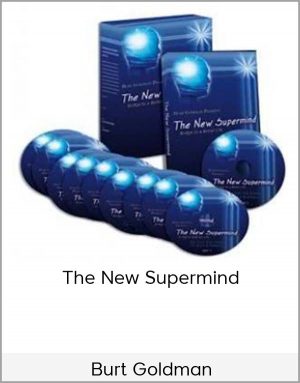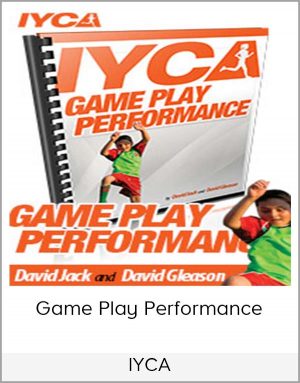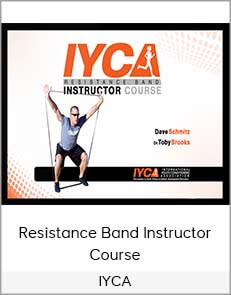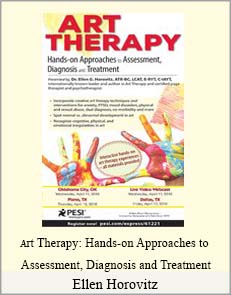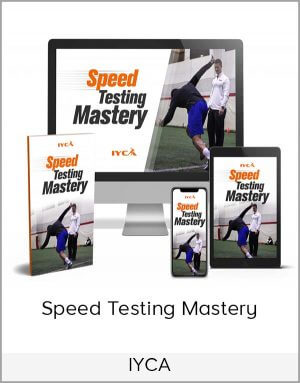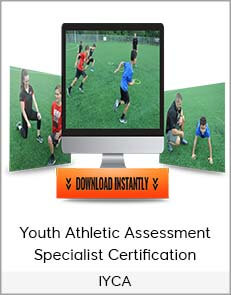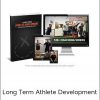IYCA – Long Term Athlete Development
$50.00$199.00 (-75%)
When athletes specialize early and skip critical steps in building this foundation, they are at extreme risk for injury and burnout.
IYCA – Long Term Athlete Development
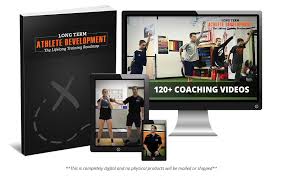
Check it out: IYCA – Long Term Athlete Development
Discover the Scientifically Proven Method for Delivering Extraordinary, Lifelong Performance Enhancement to Young Athletes…
Finally, Youth Performance Coaches Have Access to a Long Term Athletic Development System to Help Young Athletes Perform at the Highest Levels, Avoid Injury, and Eliminate Burn Out!
You already know that a Long Term Athletic Development training model produces the best, longest-lasting results, but do you know the scientific basis of this model or how to actually implement it for each developmental level?
Unfortunately, outside of the International Youth Conditioning Association and a few select resources, there isn’t much quality information out there on Long Term Athletic Development.
People talk about it’s importance. Others show graphics and models. But not many are teaching how to apply these principles in a practical way.
Many coaches and trainers use watered-down training programs designed for collegiate or professional level athletes or throw around the term LTAD as an excuse for poor programming. That’s unfortunate!
Athletes and their parents are overwhelmed with messages from well-meaning but misinformed sources saying their athletes will get left behind if they aren’t specializing early. That fear, combined with coaching from unqualified trainers, has led to a rise in injuries and burnout among our young athletes.
Young athletes deserve better!
And it starts with you…
You need to know that the world-class coaches involved in the IYCA have all faced these same battles.
To help these young athletes, you first have to be able to communicate to the parents and coaches why your approach is the RIGHT METHOD OF TRAINING!
Now, you can have the power of the International Youth Conditioning Association in your corner. A huge reason that we’ve created the Long Term Athlete Development Roadmap is to give you the tools, knowledge, and skills to help you stand out from the crowd.
This is not just another Long Term Athletic Develop model – this is a practical guide to LTAD. We’ll give you a complete roadmap for training athletes throughout their entire career from the beginning foundations to helping them achieve peak performance.
More importantly, you’ll understand the scientific concepts that underscore LTAD. You’ll understand WHY and HOW to program for each developmental level rather than just throwing together a bunch of drills and calling it LTAD. We won’t just talk about concepts, we’ll teach you exactly what to do at each stage of development.
What it really takes to create GREAT athletes…
If developing great athletes was easy, everyone would be exceptional.
As coaches, if we hope to create great athletes, or even physically literate adults who love to move, our approach must be based on the concepts of LTAD and we need to have tools in place to take athletes through each stage of development.
Just like a baby must learn to roll over before crawling, crawl before standing, stand before walking, and walk before running, your athletes need to build a foundation for elite level athletic performance before they can reach their maximum potential.
When athletes specialize early and skip critical steps in building this foundation, they are at extreme risk for injury and burnout.
Unfortunately, building that foundation early isn’t always sexy, and many coaches want to skip steps in an effort to get quick results.
The trends are shifting as more and more coaches and parents are learning about LTAD, but they simply don’t understand the concepts or how to implement them in real life.
Yet, even the best coaches in the world are on to the concept.
Urban Meyer, famous football coach at The Ohio State University, recruits mostly multi-sport athletes. In fact, some reports show that a whopping 89% of his football recruits are multi-sport athletes.
image from @ohiovarsity
And here’s a quote from Pete Carroll, former USC Head Football Coach and now Head Coach of the Seattle Seahawks:
“The first questions I’ll ask about a kid are, ‘What other sports does he play? What does he do? What are his positions? Is he a big hitter in baseball? Is he a pitcher? Does he play hoops?’ All of those things are important to me. I hate that kids don’t play three sports in high school. I really, really don’t favor kids having to specialize in one spot… I want guys that are so special athletically, and so competitive, that they can compete in more than one sport.”
Here are a few staggering statistics:
50% of overuse injuries in young athletes are from children who specialize in a single sport.
An Ohio State University study found that children who specialized early in a single sport led to higher rates of adult physical inactivity, mostly due to the fact that they are most likely to quit and suffer a lifetime of consequences.
In a Loyola University study of 1200 youth athletes, researchers found that early specialization was one of the strongest predictors of injury. The athletes who specialized were 70-93% more likely to be injured than multi-sport athletes.
And that’s just the tip of the iceberg!
But it’s not just about playing multiple sports. Your job as a performance coach is to create well-rounded athletes by giving them what they need through each stage of development.
It’s not just throwing drills together. You need to understand the needs of each developmental level and know how to train each aspect of athleticism in an appropriate way.
Your Long Term Athlete Development System
If you’ve been looking for a step-by-step plan on developing athletes from the ground up and being able to educate and communicate this model as a necessity to parents and coaches, then this is the perfect course for you!
Not only will you get the complete A to Z plan for creating a training program based on Long Term Athlete Development, but you’ll also be empowered with the knowledge and tools to educate and convince parents and coaches that this is the right system for their athletes.
Here’s what you’ll get in Long Term Athlete Development: The Lifelong Training Roadmap…
LONG TERM ATHLETE DEVELOPMENT: THEORY & APPLICATION MANUAL
This manual lays the foundation for everything you need to know to implement an LTAD system in your programs. It comes complete with case studies from all over the world, research of peer-reviewed material, and the proof you’ll need to not only implement this model but to convince parents and coaches this is the RIGHT WAY to train young athletes.
You’ll learn how to map out the path to success for athletes from the age of 2 and beyond. But, most importantly, you’ll get the practical information so you can apply it immediately.
There’s even done-for-you programming templates for each age group!
Here’s an overview:
Chapter 1: Introduction to Long-Term Athletic Development—It’s Time for a Change
Chapter 2: Global Models of Athletic Development.
Chapter 3: Physical Literacy & Motor Development.
Chapter 4: Roadmap to the Art of Coaching Ages 2-18+
Chapter 5: Practical Aspects of Coaching the Developing Athlete
Chapter 6: Long-Term Programming for the Developing Athlete
Chapter 7: Long-Term Program Design & Samples
LONG-TERM ATHLETE DEVELOPMENT VIDEO SERIES
Sometimes you simply learn better through video, so we’ve included this complete video series from Wil Fleming & Dave Gleason that covers all the aspects of programming that you need to know before working with young athletes.
Guided Discovery Programming Considerations
Module 1: Delivery
Module 2: Movement Menu [Discovery]
Module 3: Movement Menu [Object Manipulation]
Module 4: Movement Menu [Coordination]
Module 5: Movement Menu [Cooperation & Gameplay]
Module 6: Wrap Up
Learning Exploration Programming Considerations
Module 1: Delivery
Module 2: Active Range of Motion/Muscle Activation
Module 3: General Prep
Module 4: Coordination
Module 5: Systemic Strength
Module 6: Gameplay
Train with Application Considerations
Module 1: Programs for HS Athletes & Considerations
Module 2: Purpose of Your Programs (A Multi-Level Approach)
LTAD Exercise Library
Get 120+ coaching videos covering every exercise you will need to run a complete Long Term Athlete Development Program.
By breaking our videos down into simple movement menus, you’ll be able to take these movements and plug them into the correct template and start using them right away.
Designing LTAD programs has never been easier!
Be an IYCA authority
Upon completion of the course and after passing our 64-question exam, you will receive a certificate of completion to identify yourself as a Long Term Athletic Development Performance Coach!
Plus, These Amazing Bonuses…
[Video] Warming Up Your 14+ Athletes (A $99 Value)
Wil Fleming, the IYCA Director of Sports Performance, discusses how to use alternating linear periodization with your athletes and elaborates on specific warm-ups for your high school athletes.
You’re going to discover components of the movement menu and get practical examples to make your athletes’ movement prep even better!
A few of the topics covered include:
Breathing Warm-Ups for Your Athletes
A Mini-Band Activation Series
Dynamic Mobility Drills
Ladder Drills for Warm Ups
And more!
Swipe and Deploy Email Series (A $149 Value)
Get a complete list of done-for-you emails and educational materials that will help you communicate the importance of what you are doing to coaches and parents.
This critical educational material ensures buy-in from the decision makers so they support what you are doing and put their young athletes’ best interests first.
These will drastically reduce the amount of arguing and convincing that you’ll have to do when working with the parents and coaches of your young athletes.
Here are the topics we cover:
Intro to Your Business
Intro to Assessing Athletes
Intro to a Promo Program
Speed & Strength Training
Warm Ups
LTAD
Relationship Building with Parents
These templates will save you hours of time and lots of headaches!

